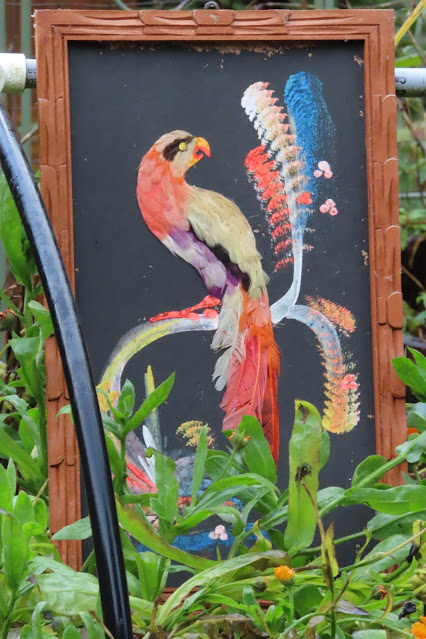Cameras, More or Less
This is a blog about a birding excursion to Costa Rica, but it may be unusual because we are not birders, but rather touring cyclists. We are not bringing our bikes, simply because we are guessing that cycling conditions (hills, traffic, distances) there would not be enjoyable. But we remain cyclists, rather than birders. One of the consequences of this is that our gear is more from the cycling world than from the birding world. One area where that really shows is in cameras.
Certainly, we will not be trying capture a distant Toucan in flight with an iPhone, but by the same token we really do not have any "real" camera. A real camera in these circumstances would no doubt be one with a full frame (or at least, large) sensor, and a selection of removable lenses. We do know one cyclist who does actually carry a kit like that, but the size and weight of such a thing makes it unreasonable for most.
We started our cycling photographic efforts with a little Canon point and shoot, the Elph 100 HS, with 12 megapixel sensor and 4X optical zoom. A camera like that fits in a shirt pocket, and can be pulled out for a quick shot while swerving down the middle of main street in some picturesque Bavarian town, or whatever. But with 4x zoom you can not really capture the castle up on the hill. We quickly upgraded to 12x zoom, like in the Nikon Coolpix S6500. But what if there are also little sheep up that hill? Ok, we moved to the 20x zoom 16 megapixel Nikon Coolpix S7000. Amazingly, these cameras with ever improving specs still easily fit in the shirt pocket. The Nikons did feel a little flimsy, so we also tried the very slightly bigger Canon SX610HX. That was still just 18x zoom, but it seemed ok.
That's where things stood until we met up with fellow cyclists Scott and Rachael Anderson, choosing a restaurant in Arles as it happened. Scott had been showing some really nice photos in his cycling blog, including many great shots of birds from along the way. He showed us his camera, which was a Lumix ZS-60 with 30x optical zoom. At that time, I thought the size of this was scandalous, for cycling. But we continued to look at Scott's photos. And we learned that other respected cycle bloggers, like Suzanne Gibson and Susan Carpenter were using that same camera. So very quickly when we go back home, a ZS-60 was in my hands. Even at that, I could never come close to Scott's great shots, because as everyone knows, the tool is only part of the story for a quality photo.
Scott's success was truly remarkable, because in truth the ZS-60 remained a "toy" shirt pocket camera, with no better sensor than a cell phone. However the 30x zoom was not bad, and we used ours to pick up birds on wires as we cycled in Yucatan. We would post the photos of these birds, but usually did not know what they were. Our followers kept identifying them for us, and slowly (so slowly) we began to learn.
 |
| Social Flycatcher - Yucatan |
We got into it enough that we went for a walk on a hotel property at Chichen Itza famous for bird spotting. There we did spot something quite exotic, the Collared Acari, but the Lumix was struggling to pick it out of the tree. That's when we encountered a birder holding a Nikon P950, with 83x zoom! She showed the camera to us, and also commented that she had not seen an Acari since "Costa Rica". Costa Rica, Nikon P950, Collared Acari - the little wheels started to turn in our heads. And now, here we are, getting ready to leave for Costa Rica, looking at the cameras on the table, and deciding what to bring.
 |
| Collared Acari in Yucatan with ZS-60 Lumix camera |
The best camera on the table is the P950, but even at that it's a toy camera. The sensor remains that of a cell phone, and the autofocus and image stabilisation is rather weak. But with 2000 mm equivalent lens size, it can at least pretend to look at birds that folks dragging a long lens on a golf cart can also be peering at.
Meanwhile, the ZS-60 lens motor broke, and it is in the repair shop. They may or may not fix it, or fix it in time for the trip. Susan Carpenter's ZS-60 also mostly broke, and she bought the 40x zoom Canon 740SX. But she didn't like it, and has sold it to us. That gives us three cameras right now to take to Costa Rica, all "toys". But how do they compare and how well can they do?
Here on Vancouver Island in November it's hard to work with birds and cameras. The light is commonly so low that useless shutter speeds like 1/30 are normal. Still, I took the cameras onto the deck and shot at a framed image of a bird, crafted in Mexico with real feathers. Here is what I got:
 |
| The bird picture at about 1800 mm |
 |
| Nikon S7000 |







Comments
Post a Comment